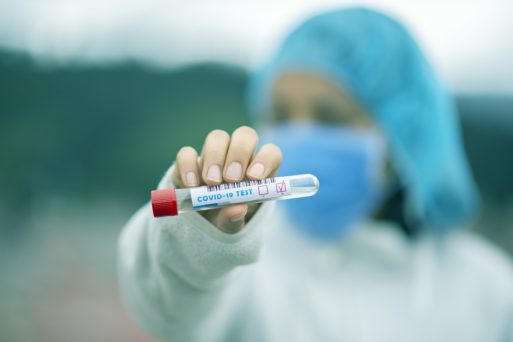
A memorial to COVID-19 victims outside the Grant African Methodist Episcopal Church, Tuesday, May 19, 2020, in Boston
Credit: Steven Senne via VOA.com
2020 was a strange year for all of us and a difficult year for most. For some, it was more difficult than others. Since the initial outbreak of COVID-19, over 2.46 million people have succumbed to the illness, over 500,000 of them in the U.S. Many more have spent weeks recovering from serious cases in the ICU. The impact on health and longevity has been acute; life expectancy dropped by a year during the first half of 2020, a first in US history.
Life Expectancy Influenced in Many Ways
In 2019, life expectancy for the total U.S. population was 78.8, which lowered to 77.8 in the first part of 2020. Further, while the elderly are particularly vulnerable to the effects of the virus, they’re not the only ones who are dying at higher rates. According to the U.S. Centers for Disease Control and Prevention, Black and Hispanic males are disproportionately more likely to die from the virus, emphasizing deep-seated inequality in our healthcare system.

Drug overdoses have also contributed to the elevated death rate, and more teens and young adults are experiencing suicidal thoughts than in previous years. In 2018, 10.7% of young adults reported having suicidal thoughts. In 2020, those figures rose to 25.5%. Across all age groups, suicidal thoughts rose by 6.7%.
A Symptom of Broader Issues
While the sharp increase in deaths over the past year is tragic, the pandemic has given us a chance to shed light into the dark corners we usually ignore. Both the direct and indirect effects of COVID-19 have illuminated the issues that still plague our society — inequality, poor mental health care and a lack of sufficient support for the most vulnerable. These issues have been with us for centuries. COVID-19 simply made them easier to see.
Long-Term Longevity Trends Positive
Although a one-year drop in life expectancy may seem huge, the big picture provides a different perspective. In 1920, the average U.S. life expectancy was just 54.1 years. Even with the pandemic factored in, life expectancy in 2020 was 23.7 years longer than it was a century ago. Our drive to advance science and medicine is responsible for that, and those are factors that aren’t disappearing any time soon.
Moreover, the events of 2020 have shown us firsthand how things like social isolation, financial stress and racial disparities impact our health.
Lessons Learned
The biggest lesson we can learn from the pandemic and its effects, perhaps, is that how we care for others matters, both in a medical setting and in day-to-day life. It’s clear that we need to work toward a future in which everyone, regardless of income, location or skin color, has access to quality health care and support services. While that’s a goal to work toward on a societal level, there are also ways for us, as individuals, to improve lifespans in our own backyards.
If 2020 taught us anything, it’s that preventative care comes in many shapes and forms.

COVID-19 testing, contact tracing and vaccines will likely help us control the pandemic and improve life expectancy across the globe.
Preventative care is making sure our senior care facilities have adequate cleaning supplies and staff support. Preventative care is wearing a mask and washing our hands. Preventative care is volunteering to pick up groceries for a neighbor. It’s also calling a friend or relative to check on them, even if you aren’t very close. It’s choosing to be kind, to give the benefit of the doubt, and to treat those around us with compassion as often as we possibly can.
Those small actions can add up to save lives. COVID-19 has shown us that, in no uncertain terms, we need each other. Caring for others can, to a point, keep them safe. What we do with that information is entirely up to us.

 In 2020, COVID-19 Decreased US Life Expectancy by a Year
In 2020, COVID-19 Decreased US Life Expectancy by a Year


 How Dare You Die Now!
How Dare You Die Now!

 “Help Me, Helen”
“Help Me, Helen”














